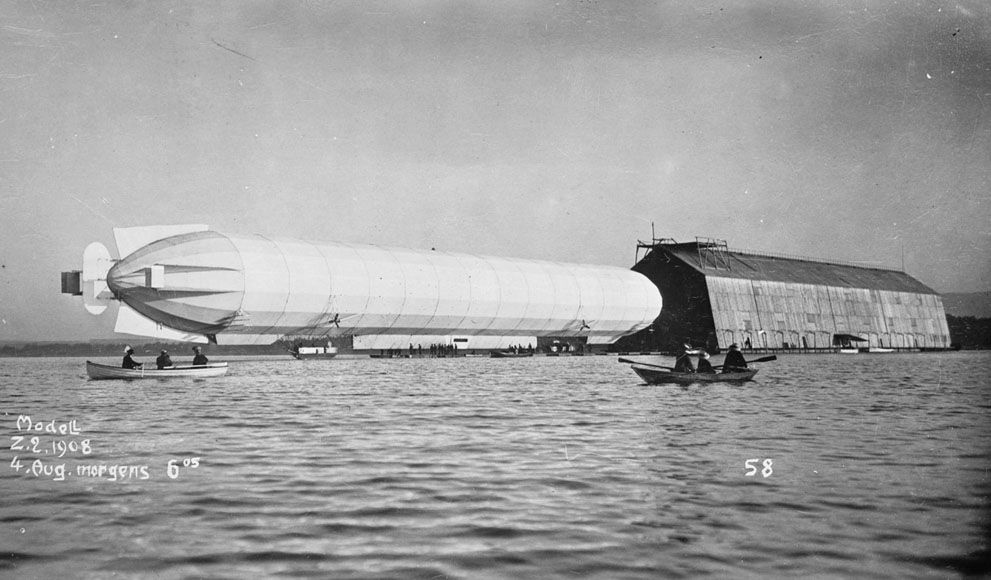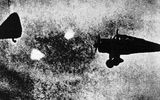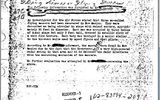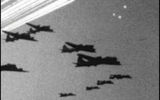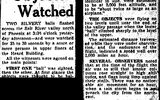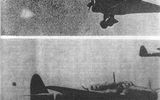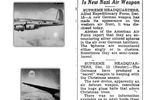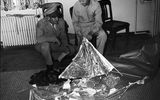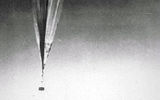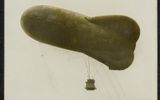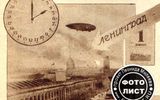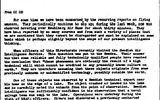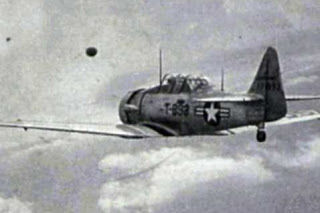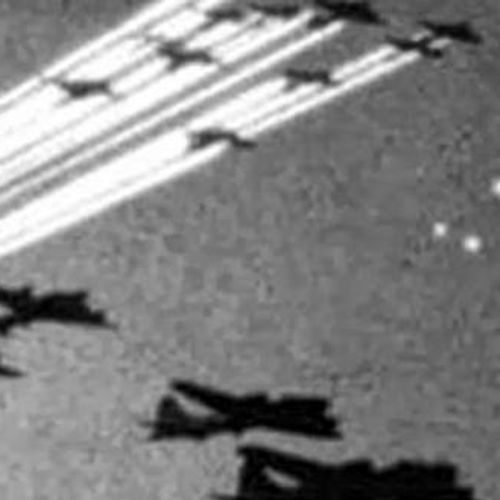
| Added | Tue, 12/12/2017 |
| Источники | |
| Феномены | |
| Версии |
Ufologists find many references to observations of mysterious objects before 1947, when ufology itself is believed to have originated. The article on the UFO phenomenon identifies the types of objects most commonly found in such early evidence:
- Ghost ships and ghost towns. The most famous example is the famous "Flying Dutchman", the first mention of which appeared in literature in 1795 in the book "Journey to Botany Bay" (English: "A Voyage to Botany Bay"). However, stories of encounters with similar "ghosts" appearing in the sky have been circulated among people before.
- Mysterious airships ("mystery airships"). Mentions of them began to appear in the American press at the end of the 19th century.
- Ghost planes ("foo fighters"). Evidence of their sightings began to appear in the 1940s.
- Ghost rockets ("ghost rockets"). In 1946, ghost rockets were sighted more than 2,000 times over Denmark, Finland, Norway and Sweden. Then such objects were observed in other countries, mainly in Europe.
If we do not take into account the "ghost ships", the appearance of which can be explained by ordinary mirages, then it becomes obvious that the rest of the mentioned types of UFOs are technical devices.
Among the post-war UFO sightings, there are two categories of objects that differ from the rest: ghost planes and ghost rockets. In this article, we will talk about these objects, give their distinctive features and possible explanations.
Let's start with the ghost planes.
The term "Foo fighters" or in the Russian version "unidentified fighters" (or "Foo fighters") was used during World War II by pilots of the anti-Hitler coalition countries to refer to unidentified flying objects or unusual atmospheric phenomena observed in the European and Pacific theaters of operations.
The term "foo" was borrowed from cartoonist Bill Holman by the radar operator in the 415th Night Fighter Squadron, Donald J. By Myers. Smokey Stover's character is a firefighter. His most frequent meaningless word in the comic was "ew."
According to the comic book historian Don Markstein:
"Smokey often called himself a fu-fighter, although anyone else would have called himself a firefighter."
Word foo also appeared on signage, lists, menus, and in the mouths of various characters at random but frequent intervals. Fu may have been inspired by the French word feu, meaning "fire", since Smokey's catch phrase was "where there is fu, there is fire", but Holman never gave a direct answer regarding the origin. According to this version, "Foo fighters" are "fire fighters".
According to another version, the word "foo" was an abbreviation of "foolish" or "foolishness" - "stupidity". According to this version, "Foo fighters" are "stupid fighters".
In an interview, Bill Holman stated that he saw him at the bottom of a Chinese jade statuette in San Francisco's Chinatown (in Chinese, fu ("wau", sometimes transliterated as "foo") means "happiness" or "blessing"). It was one of the figures depicting the "star god" Fu (there is also Lu, Shaw). They are the embodiments of Luck (Fu) governing the planet Jupiter, Prosperity (Lu) governing Mizar, and Longevity (Shaw).
Now this term is often used as placeholder names in programming, where it denotes a variable, function, or command whose exact identification is unimportant and serves only to demonstrate the concept. But how did he come to designate unusual phenomena (the term UFO did not exist then)?
During a briefing on November 27, 1944, Fritz Ringwald, an intelligence officer of the S-2 unit, stated that Donald Meyers and Ed Schleuter saw a red fireball that seemed to be chasing them, making many high-speed maneuvers. At the suggestion of Donald Myers, the fighters of the 415th Night Fighter Squadron began to call them "fuckin' foo fighters", the censored part of this name took root in official documents.
The first official reports of the observation of such objects appeared in November 1944, when, in fact, the name of this class of objects was given. Pilots making night flights over German territory began to report sightings of fast-moving luminous objects following their planes. It later turned out that pilots had observed similar objects before. For example, in September 1941, there were several reports of the observation of similar objects in the Indian Ocean, and in mid-1942, an Australian Air Force aircraft patrolling the Tasman Peninsula approached a "single-winged apparatus of brilliant bronze color" about 45 meters long and 15 meters in diameter with something like a dome on top, which sharply He went under the water. In December 1942, flying over France, a Royal Air Force pilot saw two flames flying towards him from the ground (it happened at an altitude of 7,000 feet or 2,133 m). In August of the same year, Marines in the Solomon Islands were amazed to see a formation of 150 "roaring" silver objects.
These objects were sometimes observed on radar. For example, on December 22, the pilot of the 415th Fighter Squadron reported two "large orange lights" that quickly rose to his plane as it flew over Hagenau, Germany. On the ground, the radar operator also received indications of the presence of foreign objects.
The objects were described in different ways: usually as balls of red, orange or white color, which made complex maneuvers, after which they suddenly disappeared. According to the pilots, the objects chased the planes and generally behaved as if they were being controlled by someone, but did not show hostility; it was not possible to break away from them or shoot them down. Reports about them appeared so often that such objects received their own name – "foo fighters", or, less often, "kraut fireballs". The military took the observations of these objects seriously, as they suspected that they were secret weapons of the Germans. But later it turned out that the German and Japanese pilots had observed similar objects and were also at a loss.
There are very few photos of these objects. It has not yet been possible to find at least one reliably related to the phenomenon, however, articles about "foo fighters" usually contain several photos of the same type of aircraft in flight, next to which there are white dots (one or more).
The group investigating these incidents offered several possible explanations for the foo fighters observations: electrostatic phenomena similar to St. Elmo's lights, electromagnetic phenomena, reflections from ice crystals. However, many still adhere to the alien theory of the origin of these objects.
Other UFOs observed in the period after World War II are ghost rockets, or "Spökraketer", also called "Scandinavian ghost rockets".
This type of object was observed after World War II, first in the Scandinavian countries (over Denmark, Finland, Norway and Sweden), and then in other places, mainly in Europe. They got their name because of the bright light coming from the back of the object, or a trail of fire trailing behind it, like exhaust from the nozzles of rocket engines.
The first message about ghost missiles can be considered to have come from Sweden in May 1946. One spring day, the Dagens Nyheter newspaper reported that two night watchmen noticed "a wingless cigar-shaped body the size of a small airplane, which at regular intervals slapped bundles of sparks from the tail." Further, newspapers and city services were overwhelmed by a wave of reports about wingless bright objects, spreading all over the world.
One of the most famous cases occurred on the night of July 23-24, 1948, when Clarence Chiles and John Whitted were flying a passenger plane from Houston (Texas) to Boston (Massachusetts). On July 24, at 2:45 a.m., flying over the city of Montgomery, K. Chiles noticed a torpedo-shaped object about 100 feet (30 m) long approaching from the front of the aircraft. According to the pilots, the object was moving at a speed of 500-700 miles per hour. Along the object, Whitted distinguished two rows of glowing rectangles-"windows". One of the passengers, named Clarence McKelvey, was awake and later provided a description of the object, also noting the presence of "windows". The object flew up and left behind a column of orange fire.
Description and sketches given by K. Chiles
Description and sketches, data, etc.Whitted
Interestingly, such ghost rockets often suffered accidents. They mostly fell to the bottom of lakes, but the search for debris did not bring results. The most famous of these accidents occurred on July 19, 1946, when a gray rocket-shaped object without wings fell into Lake Kelmjarv (Sweden). A three-week search for the wreckage was unsuccessful.
As for the hypotheses about the origin of these objects, most scientists were inclined to believe that these were evidence of testing prototypes of cruise missiles (based on V-1, V-2 or others).
In 1947, the Greek government conducted its own investigation, which was attended by a leading scientist, physicist Dr. Paul Santorinis (παύλος σαντορίνης). The Commission concluded that ghost missiles are not ordinary missiles. After this report, the idea of alien ships began to develop in society.
Thus, there is no such wide range of hypotheses for this type of object as for ghost fighters: these are either terrestrial weapons or alien ships from outer space.
Both types of UFOs were mentioned by UFO writers of the time, such as Donald Keiho (Flying Saucers Are Real and Flying Saucers from Outer Space) and Frank Scully (Behind the Flying Saucers).
Based on the description, these objects have a similar nature. Can we assume that these were really some kind of military aircraft (or weapons)? To answer this question, it is necessary to recall the history of aviation and aeronautics.
The concepts of rockets that could become objects of observation (both in appearance and speed, and in altitude) were developed already in the twenties of the twentieth century. For example, German scientist Hermann Obert conducted bench tests of rocket engines in the 1920s.
American scientist Robert Goddard began developing a liquid-propellant rocket engine in 1923, and a working prototype was created by the end of 1925. On March 16, 1926, he launched the first liquid rocket, which used gasoline and liquid oxygen as fuel.
In 1933, the creation of rockets, which began in 1929, was completed at the USSR Jet Institute (RNII), the installation for launching which later received the nickname "Katyusha". On August 17, 1933, the GIRD 9 rocket was launched, which can be considered the first Soviet anti-aircraft missile. It reached an altitude of 1.5 km, and the next rocket, GIRD 10, launched on November 25, 1933, reached an altitude of 5 km.
In Germany, similar work was conducted by the German Society for Interplanetary Communications (VfR). On March 14, 1931, VfR member Johannes Winkler carried out the first successful launch of a liquid rocket in Europe. The A-4 ballistic missile with a flight range of 320 km was successfully launched already during World War II, on October 3, 1942, and in 1944 began combat use of its counterpart called the V-2 (V-2), which is also the first object in history to make a suborbital space flight, having reached a height of 188 km during vertical launch. Guided missiles and bombs also began to appear actively during this period.
Thus, ghost missiles and mysterious planes could well have a rational explanation - they could be evidence of the launch of experimental military missiles.
The term "foo" was borrowed from the cartoonist Bill Holman (his character liked to say "where there is fire") by the radar operator in the 415th Night Fighter Squadron, Donald J. By Myers. Its meaning is not fully known. Bill Holman himself claimed that he saw him at the bottom of a Chinese jade statuette in San Francisco's Chinatown (in Chinese, fu ("foo", sometimes transliterated as "foo") means "happiness" or "blessing"). During a briefing on November 27, 1944, Fritz Ringwald, an intelligence officer of the S-2 unit, stated that Donald Meyers and Ed Schleuter saw a red fireball that seemed to be chasing them, making many high-speed maneuvers. With the filing of Donald Myers, the fighters of the 415th Night Fighter Squadron began to call them "fuckin' foo fighters", the censored part of this name took root in official documents.
Log in or register to post comments

